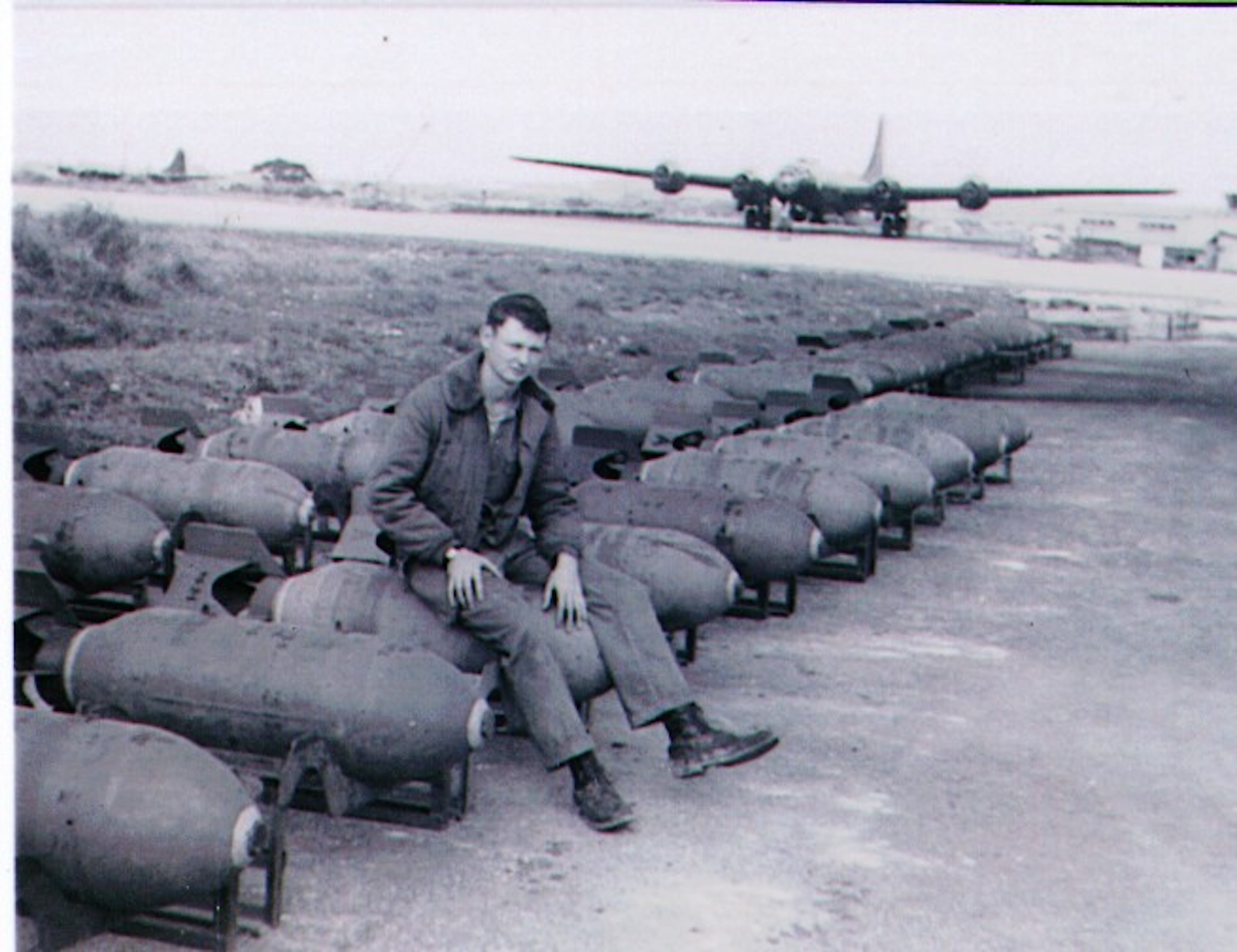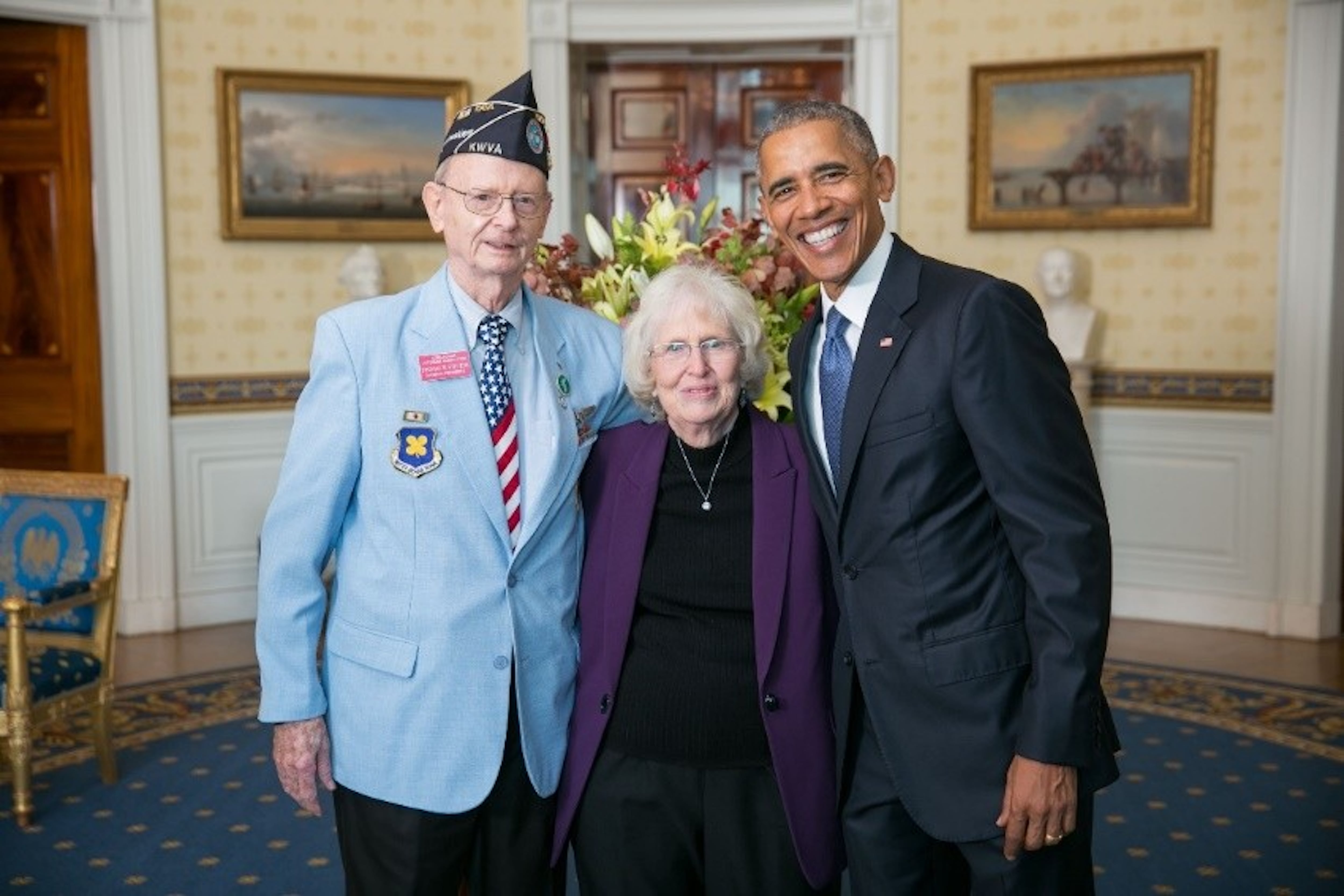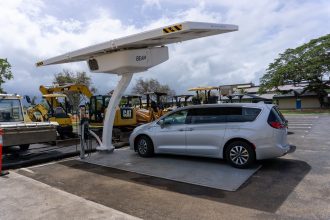Thomas Stevens’ first combat mission was memorable — and defied direct orders from the commander in chief. On Nov. 28, 1952, the 19-year-old airman was a tail gunner on a Boeing B-29 Superfortress on a nighttime bombing run over North Korea.
After dropping its load of 20 500-pound bombs on a target along the Yalu River, the aircraft was caught in a strong wind and blown over the border into Manchuria. President Harry S. Truman had forbidden any U.S. Air Force planes from crossing into Chinese airspace to prevent further escalation of the Korean War.
However, instead of a reprimand, the crews of the 307th Bombardment Group of the 13th Air Force were treated to breakfast. Running low on gas, the squadron diverted to Japan for refueling and a meal of fresh eggs — a welcome reprieve from the powdered eggs served in the unit’s mess at Kadena Air Base on Okinawa.
“We were not supposed to be in Manchurian airspace,” Stevens, now 92 and living in Overland Park, Kansas, told Military Times. “It was something the officers laughed about, but we knew we needed to get out of there in a hurry.”
He added with a chuckle, “We did enjoy the breakfast.”
Stevens is one of five veterans featured in “Gunners! B-29 Machine Gunners in the Korean War” by author and military analyst James Blackwell. The others include the late Philip Aaronson, who was shot down and spent 36 months in a POW camp, Dale Crist, Romaine Gregg and Jack Bernaciak, who flew the last B-29 combat mission in Korea. Blackwell conducted personal interviews and reviewed oral histories and military records of the five men in compiling this account of their service.
“In many ways, Korea was the ‘Forgotten War,’” the author said. “This was my father’s generation. They were young children during the Dust Bowl and Great Depression. They were the ‘Silent Generation,’ as Time Magazine referred to them. I wanted to write something that reflected who they were and what they went through.”
The new book examines a nearly forgotten chapter of the air war over Korea. With a limited number of jet bombers in service at the time, the Air Force reactivated the Superfortress to deliver payloads against enemy targets. Technologically superior only a few years earlier, the slow, four-engine heavy bombers were now relics in a supersonic jet war.
“The B-29 against MiG-15s — it was like David and Goliath,” Stevens said. “It was no contest against those jet fighters.”
Stevens flew 27 missions over North Korea and accidentally over China. From his position as a tail gunner, he had a bird’s-eye view of the results of his aircraft’s bombing runs. He could also view the fighting on the ground as Marines and soldiers slugged it out with North Korean and Chinese forces.
“I could look down at what was happening,” he recalled. “I was glad I was not down there.”
It was no joy ride in the air either. In addition to enemy jets, Superfortresses were susceptible to antiaircraft fire. The last few minutes to the target were always the toughest. Stevens remembered hearing the deafening sound of shrapnel from exploding flak hitting and occasionally piercing the aircraft’s fuselage.
“It made a loud bang, like a car in a hailstorm,” he said. “There would be little dents and holes all over the aircraft. Flak hits varied. One time it was so close that it bumped me out of my seat. We had flak suits. I couldn’t wear mine because of the tight space in the tail, so I put mine on the floor to help protect me.”
As a 19-year-old farm boy from Missouri, Stevens stated he was too young to be frightened by the danger he faced at the time. He couldn’t wear a parachute because of the confines of his firing position, so he just assumed he would go down with the plane if anything happened.
“When I think back now, I say, ‘Did I really do that? Was I that crazy?’” he stated. “We had our orders and we followed them. It was an exciting time.”

Capable of delivering conventional and nuclear weapons, the B-29 was a modern marvel when it first flew in World War II. The high-altitude strategic bomber featured an analog computerized firing system that enabled one person to direct four remote-controlled machine gun turrets, known as “blisters” because of rounded Plexiglas covers. If a gunner was wounded, the fire-control officer could direct shooting at enemy planes at that position.
Instead of firing by Kentucky windage, airmen sat in seats with a screen that showed the target and adjusted for speed, distance and other factors. When an enemy aircraft appeared in a circle of dots, the gunner flipped a switch.
“It was an analog system that was essentially mechanical, so it didn’t have the speed of a modern computer,” Blackwell said. “It was designed for shooting down German and Japanese fighters. It was a little slow against jets, but still did a good job.”
Blackwell began researching the book believing the slower Superfortress was overmatched by a faster Soviet Union jet flown in the Chinese and North Korean air forces. However, he found that premise to be not quite true.
“I had heard the stories and came to this with the impression that B-29s were obsolete and outclassed in the Korean War,” he said. “After checking the statistics, I came to a different conclusion and changed my approach to writing the book.”
While the propeller-driven heavy bombers were outpaced by enemy jets, they managed to hold their own in combat. Blackwell’s analysis of statistics showed the Superfortress was at a definite disadvantage in the early days of the Korean War when the Air Force was flying daytime missions using World War II formations. However, air command changed tactics and had the B-29s fly only at night while making single-file bombing runs. By the end of the war, B-29s had shot down 25 MiG-15s compared to 16 bombers lost to enemy jets.
“The Air Force flipped the trend by adapting new techniques,” Blackwell said. “Ending daytime missions was critical because MiG-15s weren’t equipped for nighttime attacks. Flying single file on bombing runs also reduced losses. In addition, our gunnery training outpaced that of the enemy, enabling the B-29s to stay ahead of enemy jets in terms of kills.”
Since Stevens flew only night missions, he rarely saw MiG-15s chasing his Superfortress. In fact, he did not use his two 50-caliber machine guns against a threat.
“I never fired them in combat,” he said. “Only test-fired them at the start of missions.”

After Korea, Stevens left the Air Force as a staff sergeant in 1955. He married and raised two sons while attending college on the GI Bill. He then joined Southwestern Bell Telephone Company, retiring as a district manager after 33 years.
However, Stevens’ work was not done. In 2006, he helped build and dedicate the Korean War Veterans Memorial Park in his retirement community of Overland Park, Kansas. In 2010, he was elected to the national board of the Korean War Veterans Association, serving eventually as president. In that role, he championed the cause of Korean War vets in meetings with President Barack Obama and Vice President Mike Pence, as well as other government officials.
Today, Stevens continues to speak to school groups and others about the “Forgotten War” and the sacrifices made by the men and women who served in the conflict. He is especially proud of his time in the Air Force and all he learned as an airman.
“It was an invaluable experience that helped shape the rest of my life,” he said.
Blackwell hopes his book inform readers of the debt they owe to Korean War veterans. On his speaking tour, he gives away free copies of his book to veterans so they “never forget” the people who came before them.
“Korean War vets have the same needs and hurts as the veterans of Iraq and Afghanistan,” he said. “We need to sit and listen to what they have to say, too.”
Read the full article here








